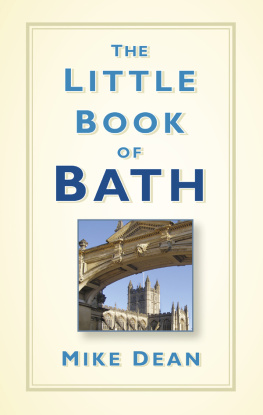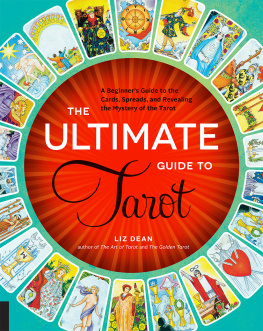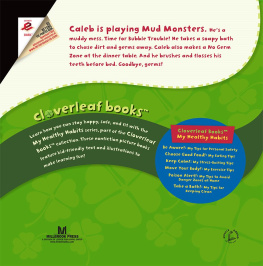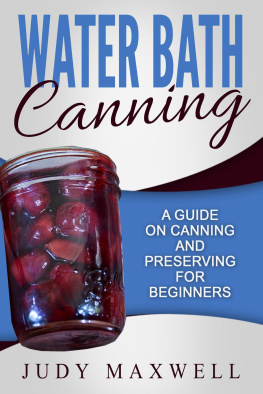
First published in 2017
The History Press
The Mill, Brimscombe Port
Stroud, Gloucestershire, GL5 2QG
www.thehistorypress.co.uk
This ebook edition first published in 2017
All rights reserved
Mike Dean, 2017
The right of Mike Dean to be identified as the Author of this work has been asserted in accordance with the Copyright, Designs and Patents Act 1988.
This ebook is copyright material and must not be copied, reproduced, transferred, distributed, leased, licensed or publicly performed or used in any way except as specifically permitted in writing by the publishers, as allowed under the terms and conditions under which it was purchased or as strictly permitted by applicable copyright law. Any unauthorised distribution or use of this text may be a direct infringement of the authors and publishers rights, and those responsible may be liable in law accordingly.
EPUB ISBN 978 0 7509 8200 9
Original typesetting by The History Press
eBook converted by Geethik Technologies
CONTENTS
ACKNOWLEDGEMENTS
The writing of this book would not have been possible without the help of numerous people. In particular, I would like to express my thanks to some of my friends and colleagues in Bath Parade Guides for their interest and for allowing me to access their considerable store of collective knowledge. Thanks also to Colin Johnston, Principal Archivist at Bath Record Office, and the staff for their skill and patience, to Graham Champken and Mick Butler for their help and advice with illustrations and to Nicola Guy and Beth Amphlett at The History Press for encouraging me to write this book. Also to my wife, Gwyneth, for her input in the form of support, ideas and suggestions. To all these, and others, I offer my gratitude. Any errors or omissions are entirely my responsibility.
ABOUT THE AUTHOR
Mike Dean is a retired primary school teacher and a registered Blue Badge Tour Guide for the West of England. A graduate of Bristol University, his hobbies include reading, walking, music and travel. He is passionately interested in sailing ships and in the folklore of the West Country. This is his first book.
INTRODUCTION
Visitors to Bath come for all kinds of reasons the Georgian architecture, the Roman Baths, the cultural and historical associations, the shopping, to name just a few. Whatever their reasons, however, Bath rarely fails to captivate, as the city has something for everyone. Over its 2,000 years of existence it has seen and experienced a great deal, and the evidence of its history is still there to be enjoyed by those who are prepared to look. Even those who think they know Bath well can make unexpected discoveries around the next corner or pick up some nugget of new information.
For example:
The Orange Grove, behind Bath Abbey, has nothing to do with the fruit. It was named because of the visit in 1734 of William, Prince of the Dutch House of Orange, who came to Bath to take the water cure.
As well as its grand Georgian architecture, Bath has its share of brutalist buildings, such as Manvers Street Police Station (1962), the Hilton Hotel (1973) and the Bus Station (2009), which has famously been compared to a baked bean tin.
On a visit to Bath in 1794, the great composer Joseph Haydn wrote a canon in honour of Turk, a dog who belonged to Venanzio Rauzzini, the Director of Music in the city at the time.
Bath is the possessor of the only hot geothermal springs in Britain, with a temperature of more than 40C. To qualify as a hot spring, the water must be above body temperature (36.9C).
The city has its own local currency, known as the Bath Oliver, which takes the form of a voucher that can be exchanged for local goods and services. There has been a suggestion that it should be replaced with a Bath Pound (like the Bristol Pound used by Baths neighbouring city).
More than 12,000 votive offerings, thrown there in Roman times, have been recovered from the Sacred Spring in the Roman Baths. Many are on display in the Baths Museum. There are also more than a hundred curse tablets, inscribed on lead and dating from the second to the fourth centuries AD, almost all of which are asking for retribution against wrongdoers.
This book does not lay claim to be a history of Bath, nor to be exhaustive or definitive, and anyone who wishes to delve more deeply into the background of this fascinating city is encouraged to consult some of the many excellent and well-researched volumes that have been produced over the years. What I have attempted to do here is to compile a collection of interesting, unusual (and in some cases, bizarre) information which I hope will prove of interest to the reader, whether a visitor or someone who is already familiar with Bath. Any collection such as this must inevitably be subjective, and cannot cover everything, so if I have not included a particular favourite of yours, I can only apologise, and would be happy to hear from you. All the information is, to the best of my knowledge, accurate at the time of writing.
1
SOME FACTS AND FIGURES
WHERE IS BATH?
Bath stands at Latitude N 51 23, W 02 22, and at its centre is 192ft (58.5m) above sea level. The major cities in the world with the closest co-ordinates to Bath are Bristol, England, and Leipzig, Germany. Baths population is currently (2017) around 89,000, and it lies within the unitary authority of Bath and North East Somerset (B&NES), in the historic county of Somerset. It stands near the southern edge of the Cotswolds in the valley of the river Avon and covers an area of about 11 square miles (approx. 28.5 sq. km.)
It has formal status as a city, and has a mayor who is chosen annually by the elected councillors. Bath is one of the oldest parliamentary constituencies in the country, having existed since 1295, and sends one member to Parliament.
Baths principal industry is heritage and cultural tourism, and in 1987 it was designated a World Heritage Site by UNESCO. The city welcomes almost 4 million day-visitors per year, and over 1 million who stay for longer. Other major employers include the National Health Service, B&NES Council and the two universities, Bath and Bath Spa. Bath has more than 400 retail shops and several theatres. Its local newspaper is the Bath Chronicle, published weekly.
BY ANY OTHER NAME
During its long history Bath has been known by a variety of names. The Romans called it Aquae Sulis (the Waters of Sulis) after the deity who was regarded as the guardian of the springs by the Celtic Dobunni tribe who occupied the area before the Romans came. It was also sometimes known by the name of Aquae Calidae (Hot Waters).
During Saxon times there were several names: Akemanceaster (which may derive from the aquae part of Baths Roman name; the Roman road named Akeman Street ran nearby and may originally have linked with Bath). Later in the Saxon period the name was changed to Bathanceaster and then to Hat Batha (or Bathum).
Bath is also a serious candidate for being the Badon or Caer Badon where the semi-mythical King Arthur is said to have fought his most famous battle, in which he defeated the Saxons. In his Historia Brittonum (c. 830) the Welsh monk Nennius mentions the Baths of Badon.
The sixteenth/seventeenth-century writer and topographer William Camden (15511623), in his great work Britannia, the first systematic survey of Great Britain and Ireland, quotes several historical names for Bath, including Badiza, Bathonia, Yr Ennaint Twymin (the city in the warm vale) and Caer Palladur (the City of Pallas). Pallas was a name, or title, sometimes given to the goddess Athena, who is, of course, the Greek equivalent of the Roman goddess Minerva, firmly linked to Bath.
Next page


















